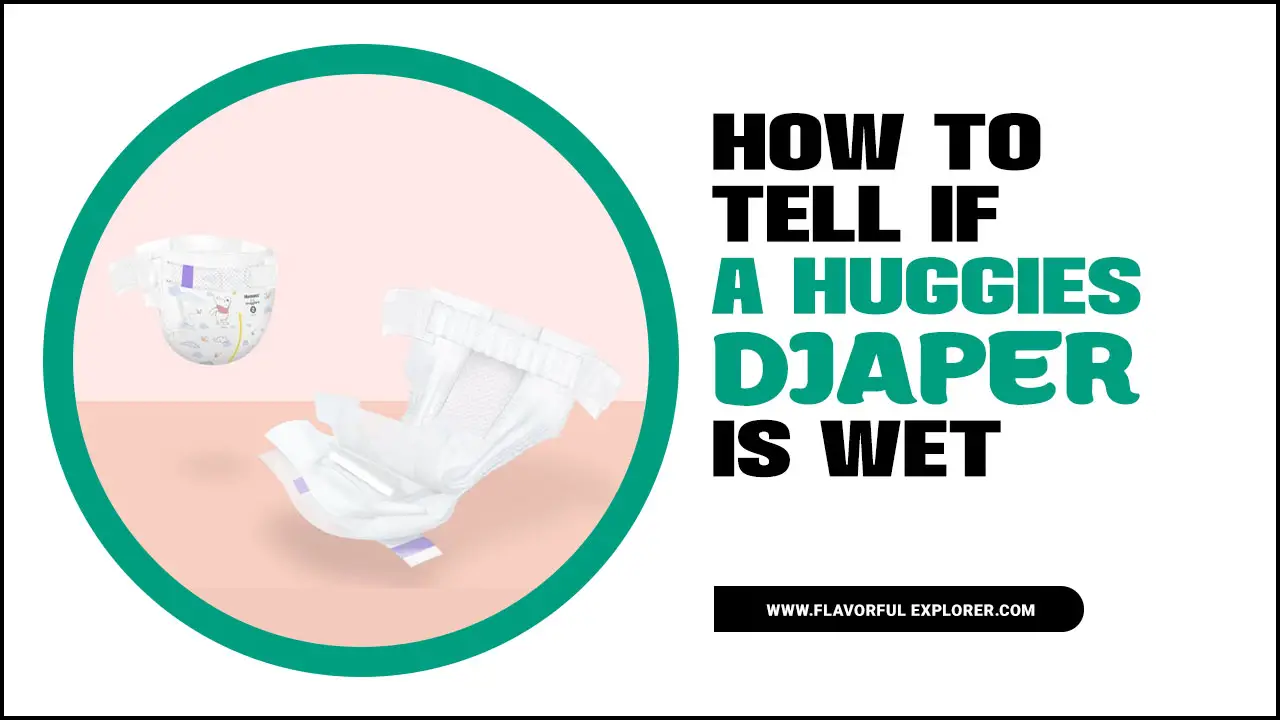As parents, we are constantly monitoring our little ones’ well-being, and one of the key indicators of their health is their diaper. However, with the advancement of diaper technology, it can be challenging to decipher whether a diaper is wet or not.
This is particularly true for Huggies diapers, which have specific designs to provide superior absorbency and keep babies dry and comfortable for longer periods. As a result, it can be difficult to tell when it’s time for a diaper change.
We will guide you through the process of how to tell if a Huggies diaper is wet. Here we will discuss the various signs and clues to look out for, as well as provide tips on how to check a diaper properly, whether you are a new parent or an experienced one. We will equip you with the necessary knowledge to confidently assess your baby’s diaper and ensure their comfort and hygiene.
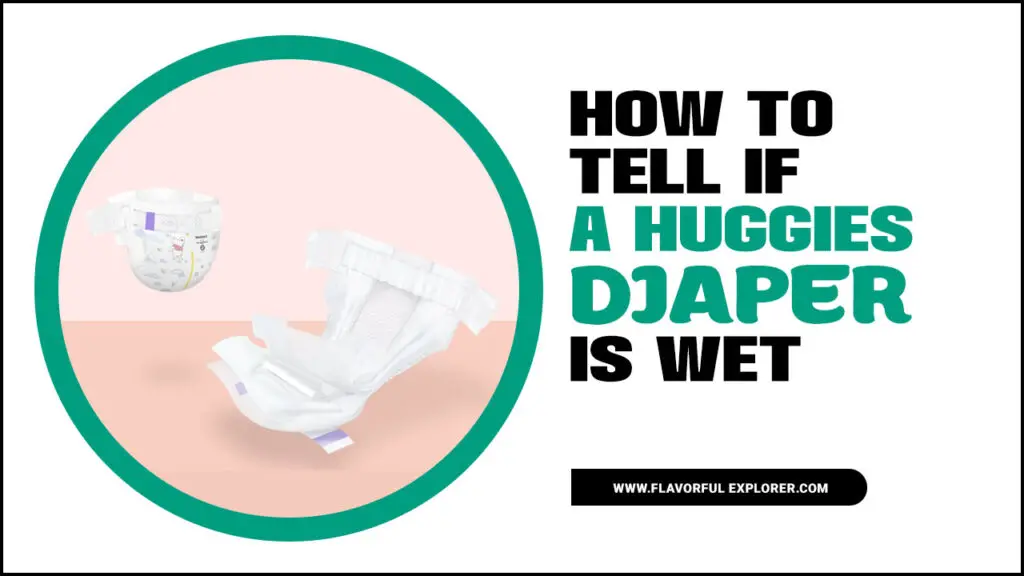
About Huggies
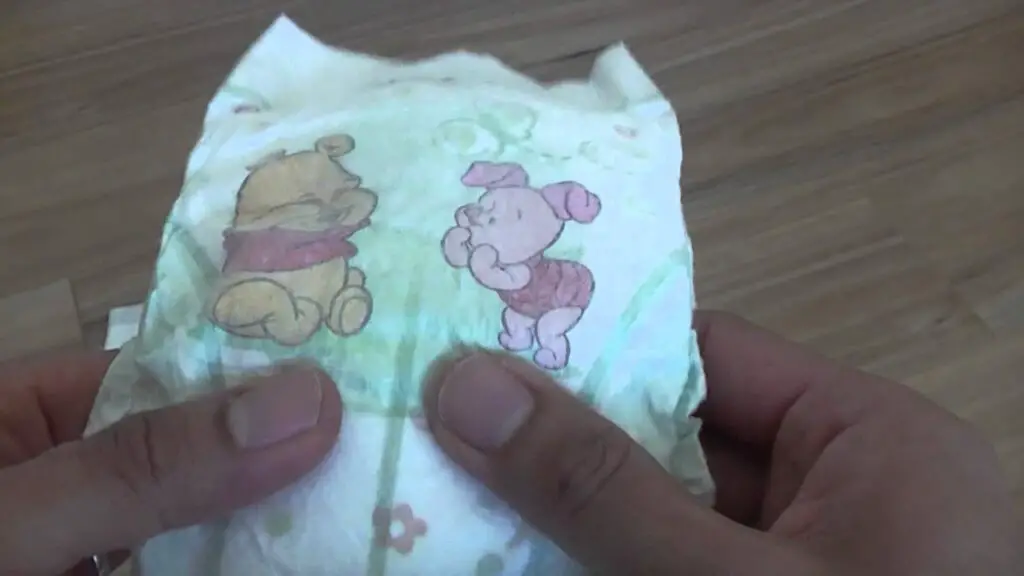
Huggies diapers are a popular brand of disposable diapers that have specific designs to provide maximum comfort and protection for babies. These diapers are specifically put to keep babies dry and comfortable throughout the day and night. They come with a soft and absorbent material that quickly locks away wetness to prevent leaks and keep the baby’s skin dry.
Huggies diapers also feature a snug and secure fit, thanks to their elastic waistbands and adjustable fasteners, ensuring that the diaper stays in place even during active play and movement. One of the standout features of Huggies diapers is their leak protection. These diapers have advanced leak guards that contain accidents and prevent leakage. This gives parents peace of mind, especially during long outings or overnight use. Huggies diapers also come in a variety of sizes, allowing parents to find the perfect fit for their growing baby.
Types Of Huggies Diapers
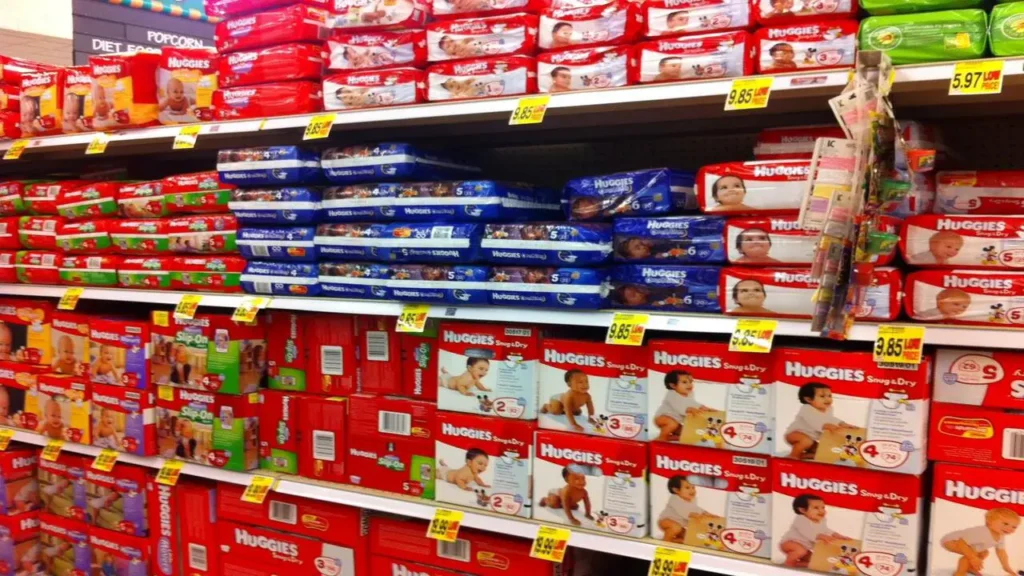
Knowing the different types of Huggies diapers is essential for new parents and caregivers alike. Understanding the various options available can help ensure that the baby’s needs are met effectively and comfortably.
One of the primary reasons why it is important to know the types of Huggies diapers is the varying needs of babies at different stages of development. Huggies offers a range of diapers designed specifically for newborns, infants, and toddlers. Each stage has its own set of requirements, such as protection against leaks, softness, and flexibility.
- Huggies Little Snugglers: These diapers have specific designs for newborns and feature a gentle absorb liner to keep your baby’s skin clean and healthy.
- Huggies Little Movers: These diapers come for active babies and toddlers, with a contoured shape and stretchy sides for a secure and comfortable fit.
- Huggies Overnites: These diapers have specific designs for overnight use, with extra absorbency to keep your baby dry and comfortable throughout the night.
- Huggies Pull-Ups: These training pants are perfect for toddlers who are transitioning from diapers to underwear, with easy-open sides and a stretchy waistband for easier potty training.
- Huggies Snug & Dry: These diapers offer long-lasting protection with a quick-absorbing core to keep your baby dry and comfortable during the day.
- Huggies Special Delivery: These diapers come with plant-based materials and are hypoallergenic. Providing premium comfort and leak protection for your
Useful Tips For You: How To Tell If A Huggies Diaper Is Wet
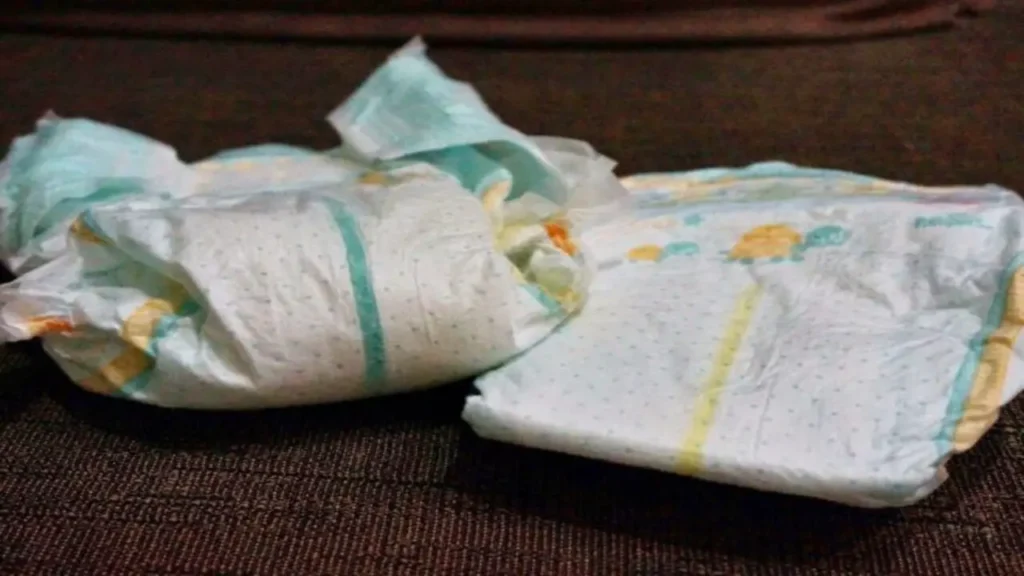
Knowing how to tell if a Huggies diaper is wet is essential for every parent or caregiver. Not only does it ensure the comfort and well-being of the baby, but it also helps maintain good hygiene practices. Huggies diapers have specific designs to be highly absorbent, providing excellent leak protection. However, it is still crucial to check the wet diaper to prevent any discomfort or skin irritation.
- Gently feel the diaper from the outside. If it feels heavy and bulky, it is likely moist.
- Check for any visible signs of dampness or discoloration on the outside of the diaper.
- Use your senses. Sniff the diaper to detect any strong odour, as wet diapers can often have a distinct smell.
- Look for indicators on the diaper itself. Some Huggies diapers have a wetness indicator line that changes colour when wet.
- Pay attention to your baby’s behaviour. If they are fussy or uncomfortable, it could be a sign that the diaper is moist and needs changing.
- Use your hand to touch the inside of the diaper. If it feels wet, it is likely time for a diaper change.
- Keep track of the time since the last diaper change. If it has been a while, it is a good idea to check if the diaper is moist.
How Does A Huggies Diaper Work?
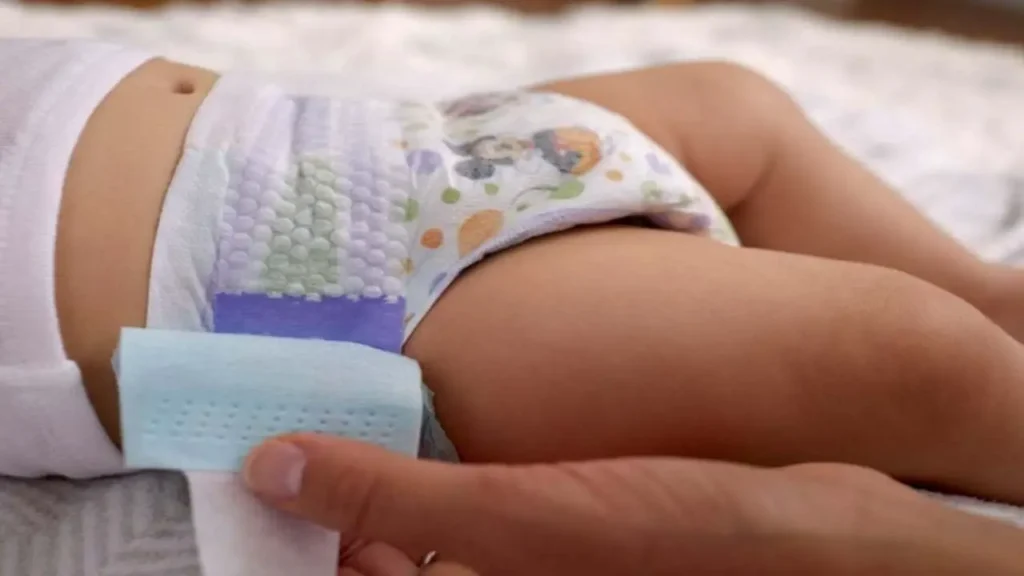
Understanding how a Huggies diaper works is crucial for parents and caregivers to ensure the comfort and well-being of their babies. Huggies diapers have specific designs with advanced technology and innovative features that contribute to their effectiveness in keeping babies dry and protected.
- Huggies diapers have specific designs with multiple layers to provide excellent absorption and leak protection.
- The top layer of the diaper comes in a soft, nonwoven material that keeps your baby’s skin dry and comfortable.
- The absorbent core of the diaper comes from a super-absorbent material that quickly locks away moisture and prevents it from coming back onto your baby’s skin.
- The elasticized waistband and leg cuffs help to create a secure and snug fit, preventing leaks and keeping the diaper in place.
- It is easier for parents to know when it’s time for a diaper change.
- You fasten the diaper with adhesive tabs on the sides, allowing for easy and secure closure.
- Huggies diapers have specific designs to be breathable, allowing air to circulate to keep your baby’s skin dry and healthy.
Identifying A Wet Diaper

Identifying a wet diaper is an essential skill that every parent or caregiver must possess. A wet diaper is a common occurrence in babies and young children, and it is crucial to identify it promptly to ensure their comfort and hygiene. The first step in identifying a wet diaper is through observation. Look for signs such as a bulging or sagging diaper, indicating that it is holding moisture.
- Look for a sagging or heavy-feeling diaper.
- Check for any visible wetness on the outside of the diaper.
- Gently press on the diaper to feel for any dampness.
- Pay attention to your baby’s behaviours, such as increased fussiness or discomfort.
- Check for a yellowish or greenish colour on the diaper’s indicator strip, if applicable.
- Smell the diaper for any urine odour.
- Keep track of your baby’s feeding and diaper-changing schedule to help determine when a diaper change may be necessary.
How To Change A Wet Diaper?
Knowing how to change a wet diaper is of utmost importance for parents and caregivers alike. Not only does it ensure the comfort and cleanliness of the baby, but it also plays a crucial role in maintaining their overall health and well-being.
- Gather all the necessary supplies: clean diaper, wipes, diaper cream (if needed), and a changing mat or clean surface.
- Prepare a safe and comfortable area for changing the diaper, such as a changing table or bed.
- Lay the baby down on their back and unfasten the dirty diaper tabs.
- Gently lift the baby’s legs by holding their ankles and slide the dirty diaper out from under them.
- Use wipes or a damp cloth to carefully clean the baby’s bottom, making sure to wipe from front to back to prevent any risk of infection.
- Pat the baby’s bottom dry with a soft towel, or let it air dry for a short while.
- Apply a thin layer of diaper cream if necessary, especially if the baby has any signs of diaper rash.
- Take a fresh, clean diaper and unfold it. Position yourself under the baby, making sure you align the back of the diaper with the baby’s waist.
Things To Keep In Mind While Using Huggies Diapers
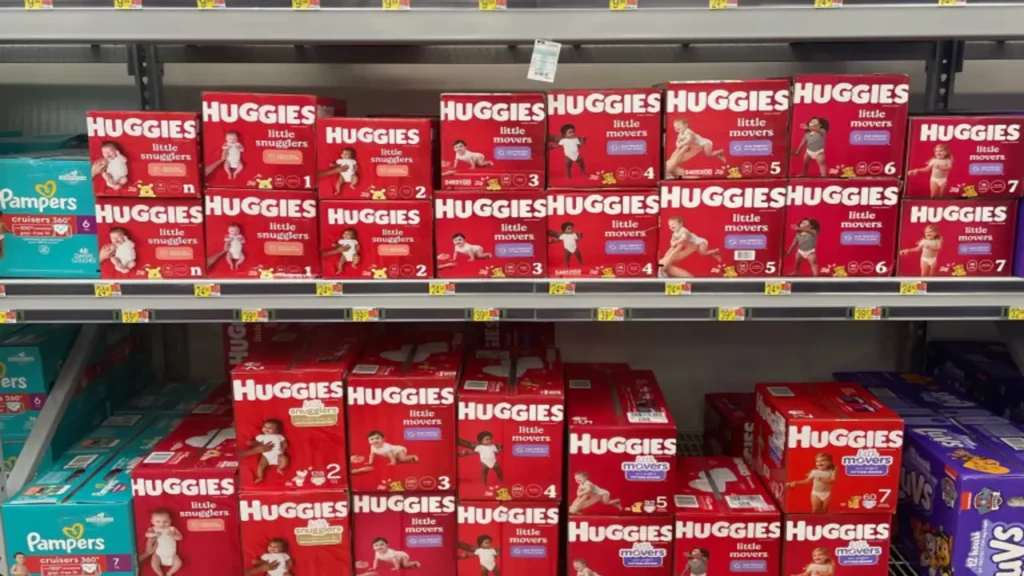
Regarding using Huggies diapers, there are a few important things to keep in mind. First and foremost, understanding why it is important to know these things can ensure the safety and comfort of your baby. Huggies diapers have specific designs to provide maximum absorbency and prevent leaks, but proper usage can enhance their effectiveness.
- Choose the right size: Selecting the appropriate size of Huggies diapers is crucial to ensure a comfortable fit and prevent leakage.
- Change diapers regularly: It is essential to change Huggies diapers frequently to maintain good hygiene and prevent rashes.
- Check for signs of discomfort: Pay attention to your baby’s reaction while wearing Huggies diapers. If they seem uncomfortable or irritated, it may be time to change the diaper.
- Properly dispose of used diapers: Always dispose of used Huggies diapers hygienically to prevent odors and maintain a clean environment.
- Be mindful of diaper capacity: Huggies diapers have specific capacity limits. Avoid overloading them to ensure optimal absorption and prevent leakage.
- Keep the diaper area clean: Before putting on a new Huggies diaper, make sure to clean your baby’s diaper area thoroughly to prevent irritation and infections.
What To Do If You Think Your Child Has A Wet Diaper?
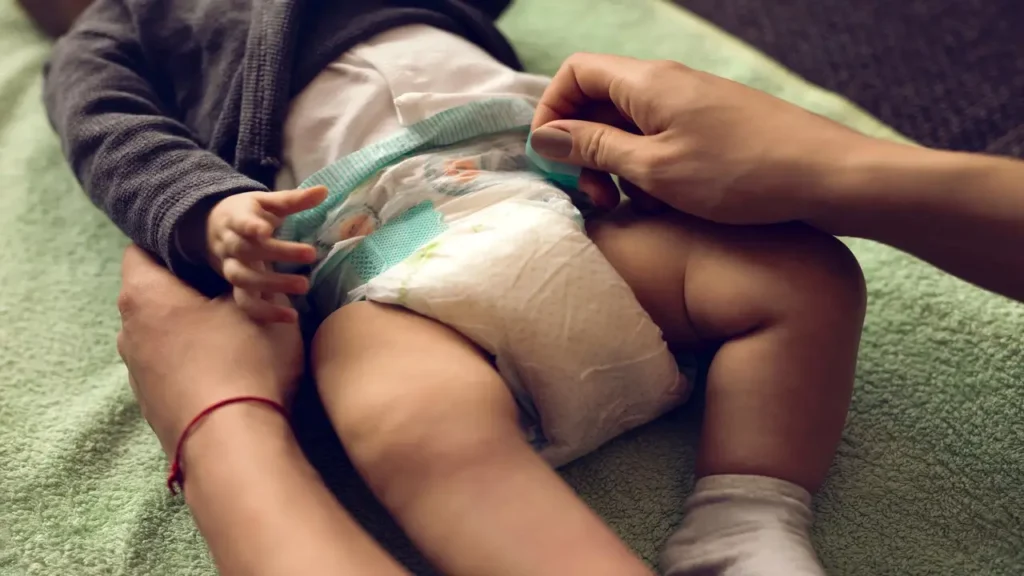
When you suspect that your child has a wet diaper, it is essential to take immediate action to ensure their comfort and well-being. The first step is to check their diaper by carefully lifting the front flap. It is essential to handle this process with care and gentleness to avoid causing any discomfort to your little one. Once you have confirmed that the diaper is really moist, it is time for a diaper change. Start by preparing a clean and safe area for the diaper change.
Lay a changing mat or towel on a stable surface, such as a changing table or bed. Gather all the necessary supplies, including a fresh diaper, wipes, and any other diaper products you prefer to use. Next, carefully remove the soiled diaper, taking care to wipe away any excess moisture or waste.
Conclusion
Knowing how to tell if your baby’s diaper is wet can save you time, money, and headaches. By using simple techniques like the “squeeze test” and checking for a colour-changing wetness indicator, you can ensure your little one stays dry and comfortable.
And with the constant innovations in diaper technology, such as Huggies’ DryTouch liner, it’s easier than ever to keep track of your baby’s diaper status. So next time you’re changing a diaper, remember these tips and trust in the quality of Huggies to keep your baby dry and happy. We hope you now understand how to tell if a Huggies diaper is wet or not.
FAQ
1.How Can I Tell If A Huggie’s Diaper Is Moist?
Ans: You can feel the diaper by gently pressing on the front to check for moisture. Gently press on the front of the diaper to check for moisture as one way to determine if it needs changing. You can do this by placing your hand on the outside of the diaper and applying light pressure with your fingers.
2.Are There Any Visual Indicators That A Huggie’s Diaper Is Wet?
Ans: Yes, a wet diaper may appear slightly bulky and may have a slight colour change in the wet area. Yes, it is a common occurrence for a wet diaper to appear slightly bulky and have a noticeable colour change in the wet area.
3.Can I Rely On The Wetness Indicator On Huggies Diapers?
Ans: Yes, Huggies diapers often have a color-changing wetness indicator that can help you determine if the diaper is moist. Yes, Huggies diapers, one of the leading brands in the diaper industry, have truly revolutionized the diapering experience for both parents and babies.
4.Is There A Certain Time Frame In Which I Should Check If A Huggies Diaper Is Wet?
Ans: We recommend checking the diaper every 2-3 hours or whenever your baby shows signs of discomfort or a need for a diaper change. As a new parent, one of the most important responsibilities is keeping your baby clean and comfortable. And for diaper changes, experts recommend checking your baby’s diaper every 2-3 hours.
5.Is There Any Other Way To Confirm Wetness?
Ans: Absolutely, you can gently open the diaper and visually inspect the inside. If you see any wetness or feel dampness on the inner lining, it indicates that the diaper is wet. “Of course, you are more than capable of delicately unfolding the diaper and conducting a thorough visual examination of its interior.
